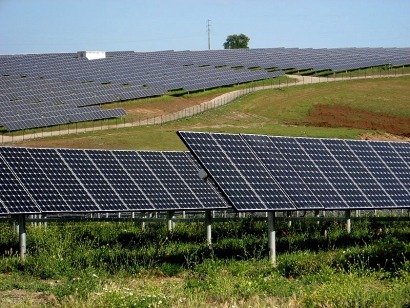
In 2012, the PV market will not present negative results, despite the cuts of the incentives in Germany and Italy. For this year the estimated trends are moderately good and we could foresee a market at almost 27 GW ,says Stephan De Haan from market intelligence provider, IHS.
These are some of the indications given during his speech at the fourth edition of the “Italian PV Summit, roadmap to grid parity”. The international PV top-conference is taking place in Verona (Italy) today and tomorrow, and as usual in the two days preceding the thirteen edition of the international exhibition-conference Solarexpo.
“The Italian PV Summit 2012 takes place in a very complex and sensitive transition period for the whole PV industry, heading towards the maturity and the grid parity”. With these words Paolo Frankl, Head of Renewable Energy Division of IEA - International Energy Agency, opened the international PV conference in Verona.
Stephan De Haan gave a detailed overview on the evolution of the PV market and the outlook for demand, supply and price levels for the next future. Despite a considerable worldwide growth of the whole sector in 2011 with 27.6 GW installed and many on-going changes in the national laws, above all in some European leader countries like Germany and Italy, the market is not going to collapse in 2012: on the contrary the outlook is moderately good, so that we might foresee a 27 GW market also for this year.
“In Germany the market should have almost the same volumes of 2010 and 2011, with about 6.9 GW, - said De Haan – thanks above all to a push in the second part of the year and an acceleration of the residential and commercial building market, which in some cases, with the prices collapse, might get close to the grid parity (defined as PV production costs at or below retail electricity prices)”. Something which is very close to happen also in Italy in some segments of the market.
If the Italian market, one of the leading markets in 2011, will became smaller as foreseen in 2012 (about 2.5 GW installed power), the demand in China (more than 4 GW), USA (about 3.5 GW) and then also in Japan (about 2 GW) and India (more than one GW) plus in other smaller emerging markets, will bring the industry back to a trend in line with the present overcapacity.
34 GW in 2012
According to De Haan, in the most optimistic scenario, even a level of 34 GW might be reached in 2012 at a global level.
The IHS analyst also highlighted that in 2011 the prices dropped dramatically for the whole chain. For the silicon modules the prices went down by 45% between the first quarter 2011 and the first quarter 2012; the price of the module is quickly getting close to 0.60 €/W (0.80 $/W), a level estimated for the last quarter 2012. For the cells the drop might be 58%. The decrease is even wider for the wafers (-63%) and for the poly-silicon (-65%). In Germany for a PV residential plant the drop, in the same period, is about 23% (from 3.5 to 2.7 $/W).
This dramatic price reduction, which should stabilize at the year end, has allowed to keep the demand high, said the analyst, but it has also put under pressure the industry, which now has margins close to almost zero. According to Stephan De Haan the competition in the PV industry will significantly change already in the next few years.
For additional information:

